Everything you need to know to make the best oil-poached tuna you’ve ever tasted.
I grew up on oil-canned tuna and can’t imagine that long ago childhood without its ubiquitous tuna salad sandwich–on Wonder bread, oozing with mayo, sweet pickle, and flaked tuna. If I was feeling fancy, I topped it with a slice of American cheese.
But later in life, my love affair with tuna faltered when grocery stores replaced oil-canned tuna with dry, mealy, water-canned tuna. No thanks.
Of course, seriously good oil-canned tuna still exists–in specialty markets, for a price–but recently it occurred to me to simply make my own. Why not? September is Oregon Albacore Tuna Season after all.
So I strolled to my fave Portland seafood market, Newman’s Fish Market in City Market NW and talked to new owner, Angela Amos, about the ins and outs of cooking fresh tuna.
In Portland restaurants, I most often encounter tuna either raw or almost raw with a quick surface sear only. I wanted big, juicy flakes of tuna to incorporate into salads, pastas, and noshes. Angela suggested poaching in olive oil–a cooking method used widely in France and Italy.
So I bought a couple of tuna loins and hurried back to the OtherWorldly Kitchen to quickly read everything I could find on French Confit (audio pronunciation) and Italian Conserva (audio pronunciation), which both involve low, slow cooking in fat, oil, or sugar syrup—an ancient method of preservation.
With this type of cooking, the temperature of the poaching medium is between 150ºF-200ºF. Deep fat frying, on the other hand, utilizes temperatures between 325ºF–400ºF.
I noticed something worrisome about some of the fresh tuna dishes I saw on the web however. The cooked tuna looked either dry or mushy. Digging deeper, I discovered a couple of chefs extolling the virtues of water-brining the fresh tuna BEFORE poaching it. This brief process helps to ensure firm texture and large flakes of tuna after oil poaching. I tried it, and it works perfectly.
Today, confit is not used so much as a method of preservation as a method to produce the most sublimely textured, most delectably flavored meat or fish possible.
Although some sources claim that meat or fish cooked this way can be safely preserved in the fridge for up to several months or even years, I can’t imagine it lasting more than a week or two.
Fresh Albacore Tuna Confit (Tuna Conserva)
Although this method of cooking fresh tuna involves a bit more effort than opening a can, it’s definitely worth it. Your reward will be beautifully textured, evocatively flavored, super-large flakes of tuna. You may never go back to canned-especially during albacore tuna season.
Technique Note Don’t be tempted to skip the brining process. It takes only 30 minutes and virtually assures large, firm flakes of tuna, instead of mush.
Ingredient Note You need enough oil to cover the tuna. The amount specified here is sufficient IF your pan is the same diameter of the pan I used. Add more oil if needed to cover the tuna.
1 pound fresh, sashimi-quality albacore tuna, cut into 1½- to 2-inch lengths
Brine for Fresh Tuna
1 quart cold water
1 cup sugar
¼ cup fine sea salt
Poaching Medium for Fresh Tuna
1½ cups extra virgin olive oil
1½ cups vegetable oil
½ medium yellow onion, skinned, trimmed, and sliced
zest of 1 lemon, in wide strips
4 large cloves garlic, peeled, trimmed, and thinly sliced
3 sprigs fresh thyme
1 sprig fresh rosemary
1 bay leaf
1 teaspoon black peppercorns
½ teaspoon fine sea salt
- First, brine the tuna: In a glass container, combine water, sugar, and salt. Add tuna, and let brine for 30 minutes ONLY. Remove from brine, and pat dry.
- In a deep sauce pan (7-inch diameter, 4-inch depth, 2-quart capacity), combine oils, onion, lemon zest, garlic, thyme, rosemary, bay leaf, peppercorns, and salt.
- Heat oil to between 140°F and 150°F, stirring occasionally, and maintain heat for 20 minutes to infuse the flavors of the aromatics into the oil.
- Remove from heat and continue to infuse for 30 minutes. The oil will still be warm.
- Put the saucepan back on the stove over medium-low heat and slip the tuna into the still warm oil. (Add as many pieces as will fit in one layer. The tuna must be covered by the oil; add more oil if needed.) Bring the oil back to 150°F.
- Immediately remove from heat, and let tuna cook slowly in warm oil. After a minute or two, test for doneness by flaking a piece of tuna. The tuna should be pale pink at the center. (It will also read 135°F on an instant-read thermometer.) If tuna isn’t quite done, return to the oil for another minute, and then test again.
- When cooked to desired degree, transfer tuna to a storage dish, strain cooled oil over the top, and refrigerate until needed.
- Tuna keeps for up to 2 weeks covered in the fridge.
Cookin’ with Gas (inspiration from around the web)
- Ask The Food Lab: What The Heck is Confit? | Serious Eats
- Confit | About Food
- Cook the Book: Tuna Conserva with Potatoes, Radicchio, Green Olives, and Almonds | Serious Eats
- EDF Seafood Selector: Tuna | EDF
- Frasca’s Conserva Brings Out Best In Tuna | Daily Camera
- The Science Behind Brining | Stella Culinary
- Tuna Confit | NYT Cooking
- Turning Tuna into a Velvety Confit | Fine Cooking
- What Is Duck Confit? | Food Republic
Copyright 2015 Susan S. Bradley. All rights reserved.


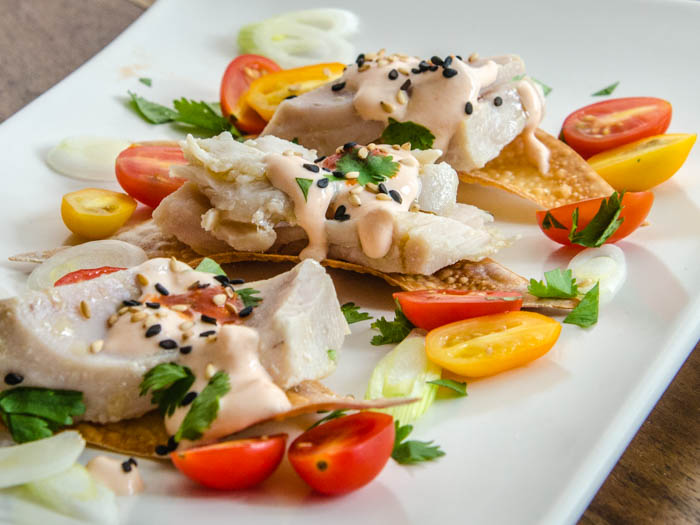

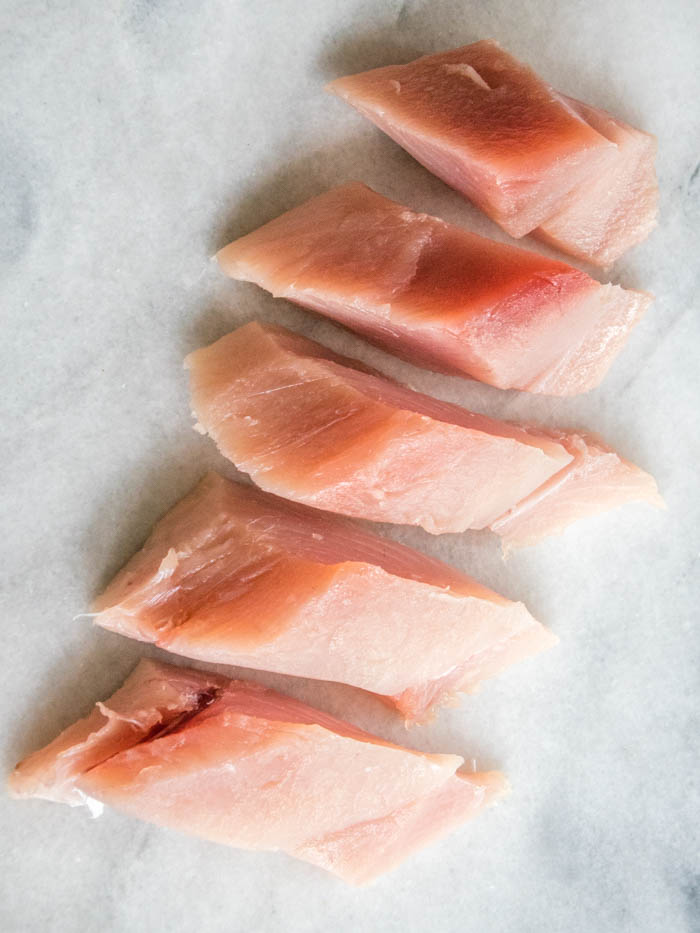

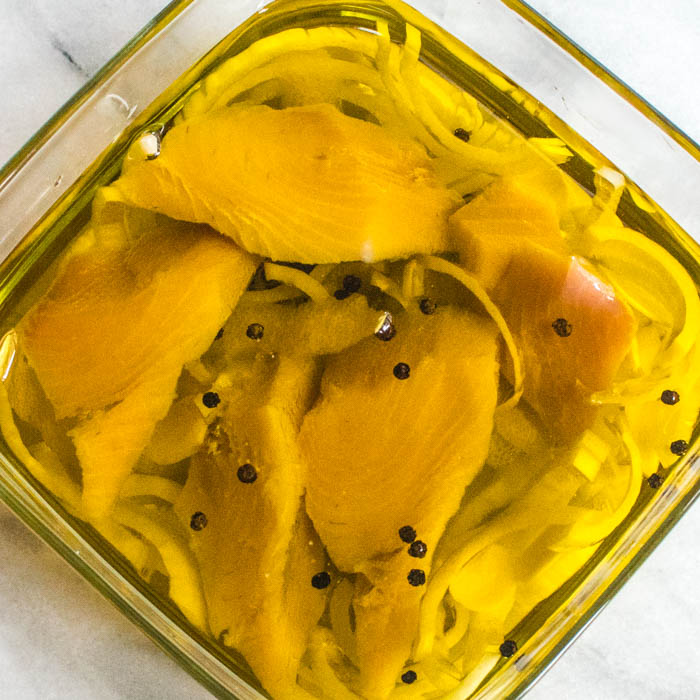
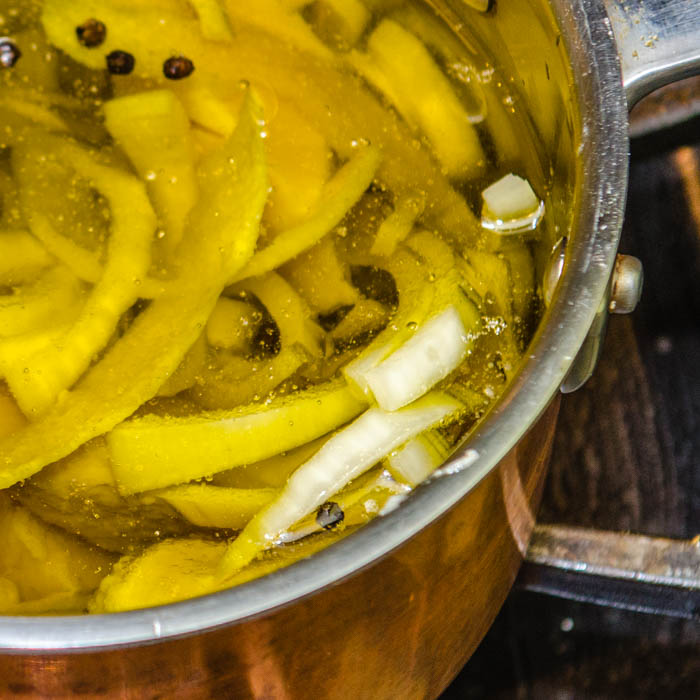
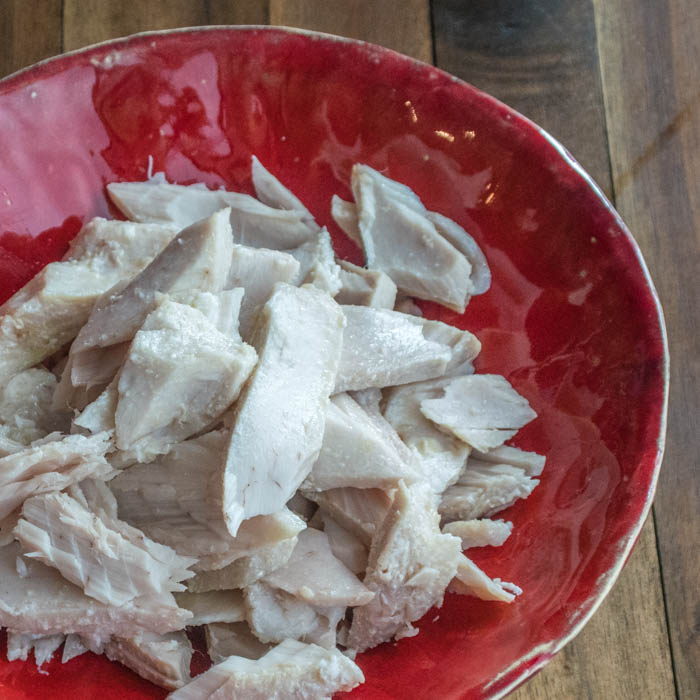
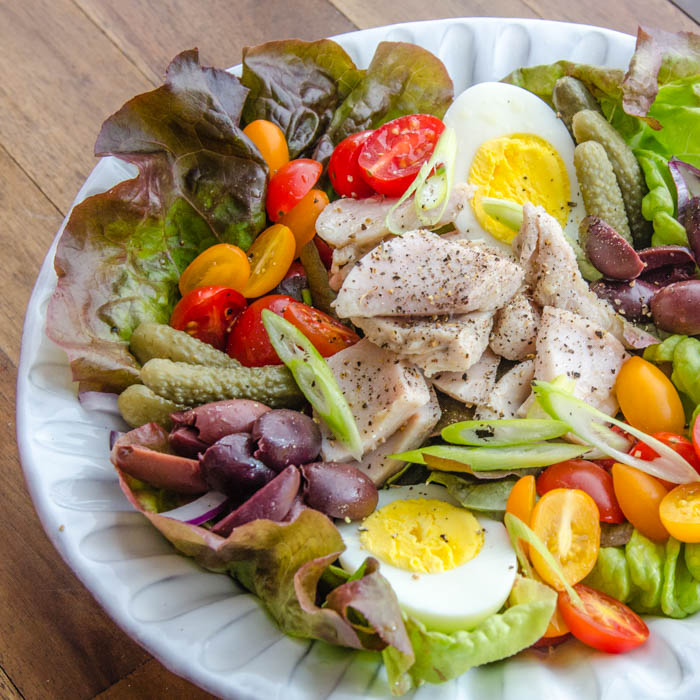
Several questions: First, apparently the tuna is cut into smaller pieces. I didn’t see any instruction regarding the size of the pieces; does it matter at all, excepting whatever will fit into the pan? And next, do you think the flavor or any other quality would suffer if cooked without all the spices? The thought of rosemary and thyme flavored tuna sounds objectionable to me. My tastes are quite simple and I wonder how many of the flavoring items are necessary to the success of the fish.
Naomi, thanks for your questions. The tuna loin should be cut in 1 1/2 to 2-inch lengths. The flavorings in the oil poaching medium are optional, except for the salt. In any case, the flavor imparted by the onions and herbs is mild. Hope you try it. 🙂
Thanks so much for your reply, Susan. I usually avoid tuna because, as others stated, I haven’t been able to prepare it to my satisfaction. I’m excited about this technique and can’t wait to try it. I’m thinking of trying it with salmon also.
Beautiful! We love eating fresh (non canned) tuna as well, but I normally sear it. I will definitely try this method, your fish looks so moist!
Kristen, I am so pleased with the results of this exploration. Looking forward to developing several new recipes using tuna confit.
That tuna is gooooorgeous. I would definitely enjoy nicoise-style.
Thank you Brandon! 🙂
I’m so intimidated by poaching and fish in general but you make it seem easy. This recipe looks delicious!
Emily, this method is super-easy and nearly foolproof. Just make sure to use a thermometer, and don’t let the oil get above 150 degrees.You’re going to love it. 🙂
I would have never thought of preserving tuna this way. The finished fish looks flaky and delicious. I want some, do you deliver? 😉
Debra, I can’t deliver, because we ate every last scrumptious morsel. And now black cod has arrived at Newman’s Fish Market, so need to jump on that. 🙂